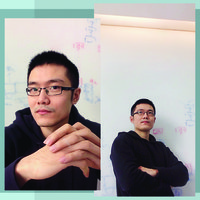Artificial intelligence & robotics
Huichan Zhao
Perception for soft intelligent prostheses

Japan
Yusuke Narita
A "revolutionary" working across numerous nations, cultures, and industries based on the idea that data and algorithms can change system infrastructure.

Global
Jiwei Li
In the last few months, Google and Facebook have both released new chatbots. Jiwei Li’s techniques are at the heart of both.

Japan
Ken Nakagaki
Inventor develops innovative user interfaces. Fun filled ideas pave the way for new relationships between people and machines.

Latin America
Tatiana Chavarriaga
Her remote physical therapy platform helps chronic pain patients improve their quality of life despite physical barriers.
